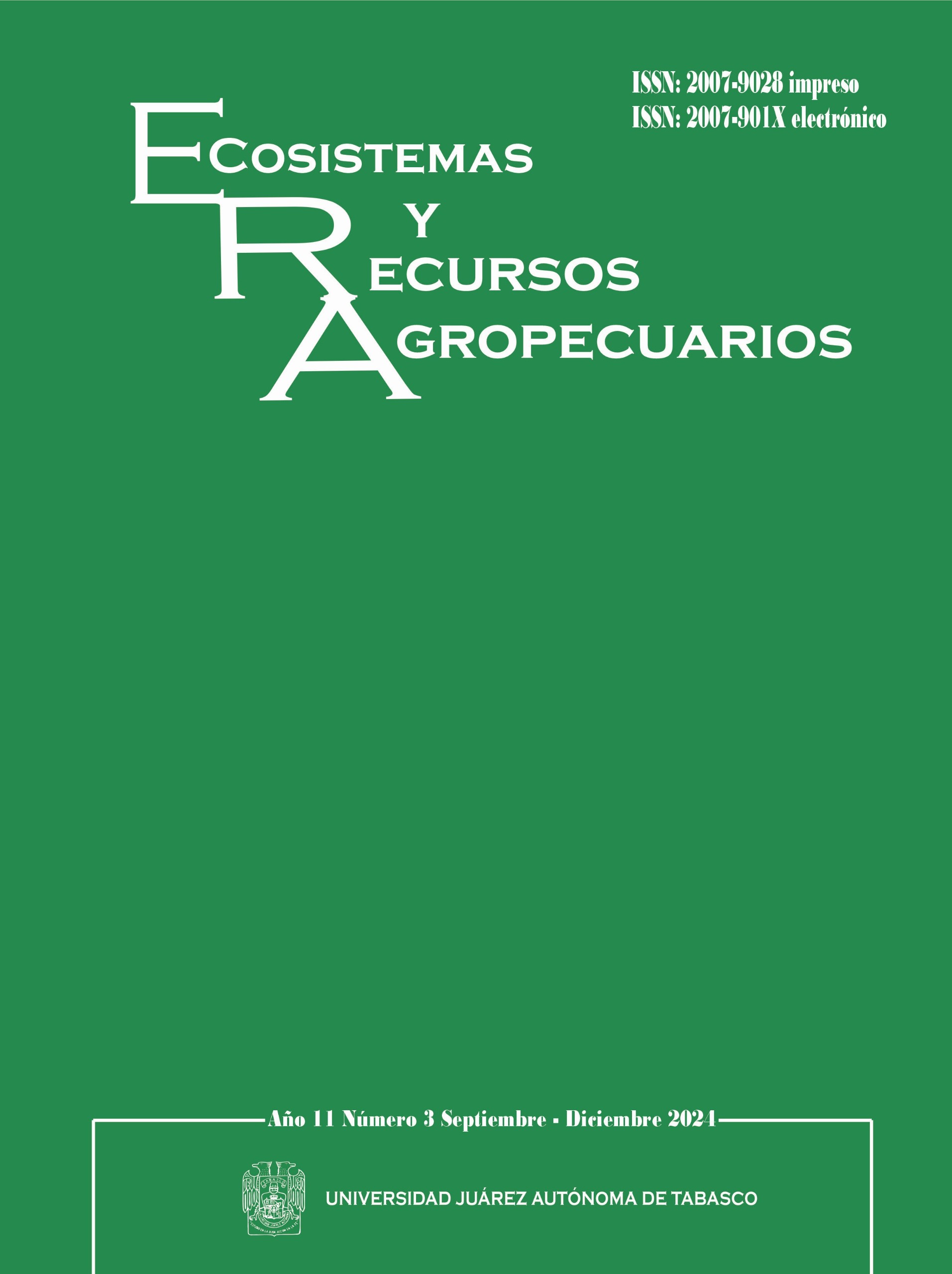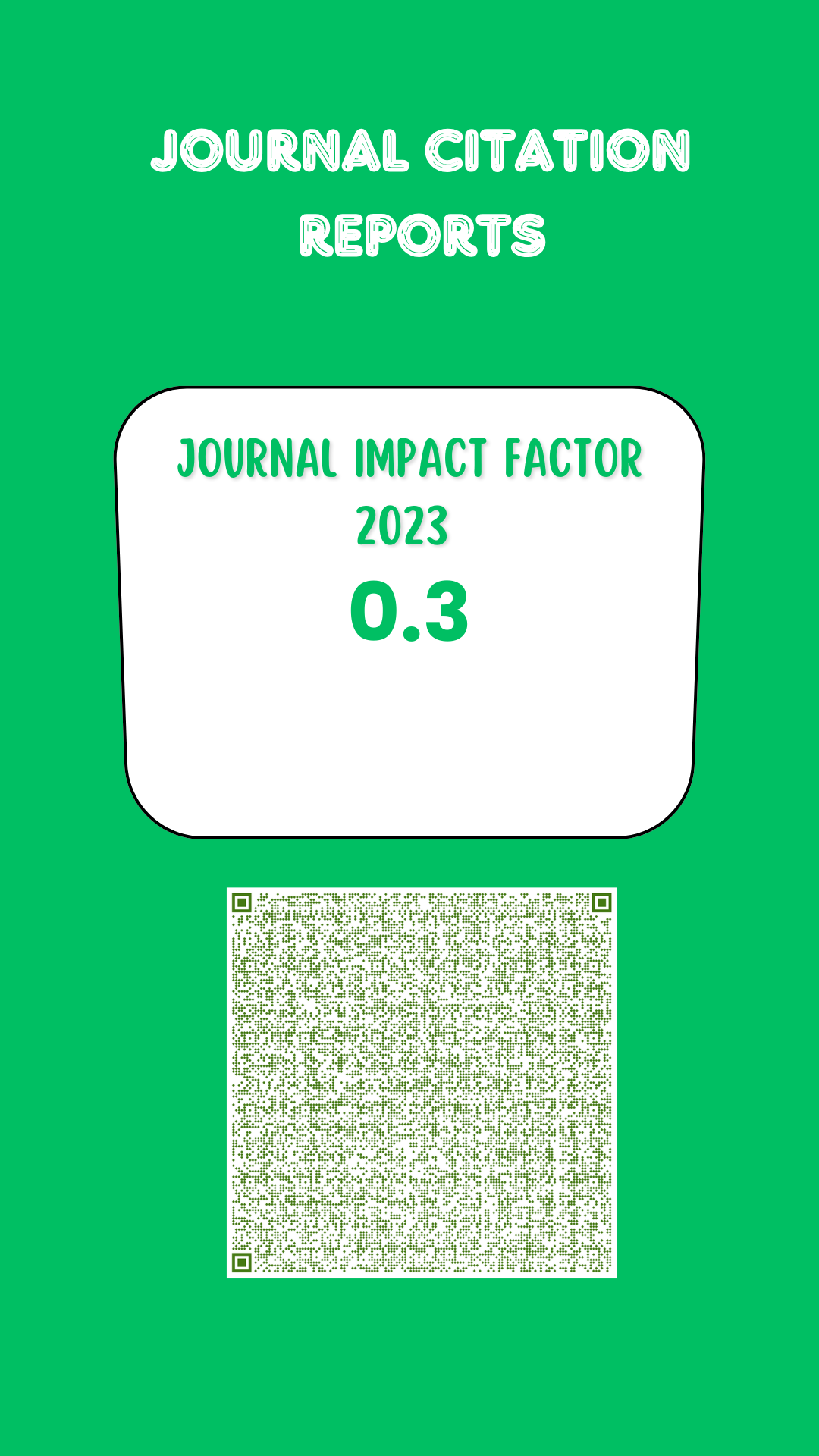Control biológico de la broca del café con hongos entomopatógenos en Nayarit, México
DOI:
https://doi.org/10.19136/era.a11n3.4148Palabras clave:
Efectividad biológica, Incidencia, Severidad, B. bassianaResumen
La broca es la plaga de insectos más dañina del café en todo el mundo y afecta tanto el rendimiento como la calidad. Debido a su importancia económica, el barrenador ha sido objeto de considerables investigaciones en todo el mundo, tanto para determinar su biología, como para desarrollar tecnologías de control económica y ambientalmente viables. Gran parte del trabajo se ha centrado en el control biológico con parasitoides y entomopatógenos. El objetivo de este estudio fue aislar, identificar y evaluar cepas de Beauveria bassiana nativas de las zonas cafetaleras de Nayarit contra la broca del café en condiciones de campo. Las cepas se obtuvieron de muestras de suelo y fruto de café de 15 huertas y fueron evaluadas en un huerto de producción de café orgánico. En general, las cepas de B. bassiana mostraron un buen comportamiento contra la broca del café con efectividad superior al 76%. En la región de estudio, si no se aplican medidas de control, los porcentajes de infestación podrían llegar hasta el 56%. Las cepas regionales de B. bassiana se consideran una opción para el control biológico de la broca del café.
Descargas
Referencias
Barnett HL, Hunter BB (1998) Illustrated genera of imperfect fungi. 4th ed. APS Press. Virginia, EE.UU 218p.
Barrera JF (2002) La broca del café: Una plaga que llegó para quedarse. En: Barrera JF (ed) Tres plagas del café en Chiapas. El Colegio de la Frontera Sur, México. pp: 17-20.
Bidochka MJ, Kasperski JE, Wild GAM (1998) Occurrence of the entomopathogenic fungi Metarhizium anisopliae and Beauveria bassiana in soils from temperate and near northern habitats. Canadian Journal of Botany-Revue Canadienne De Botanique 76: 1198-1204.
Bravo-Bolaños O, López-García J, Sánchez-González A (2020) Estructura y composición florística de los bosques de Quercus del volcán Sanganguey, Nayarit, México. Botanical Sciences 98(3): 441-452. https://doi: 10.17129/botsci.2490
Bustillo-Pardey AE (2005) El papel del control biológico en el manejo integrado de la broca del café, Hypothenemus hampei (Ferrari) (Coleóptera: Curculionidae: Scolytinae) Revista de la Academia Colombiana de Ciencias Exactas, Físicas y Naturales 29 (110): 55-68.
Cerna-Chávez E, Lira-Ramos KV, Ochoa-Fuentes Y, Delgado-Ortiz JC, Cepeda-Siller M, González-Gaona E (2021) Actividad de extracto de plantas y hongos entomopatógenos para el control del picudo de la guayaba (Conotrachelus dimidiatus Champion) (Coleoptera: Curculionidae). Biotecnia 23(1): 70-76. https://doi.org/10.18633/biotecnia.v23i1.1336
Chaithra M, Prameeladevi T, Prasad L, Kundu A, Bhagyasree SN, Subramanian S, Kamil D (2022) Metabolomic diversity of local strains of Beauveria bassiana (Balsamo) Vuillemin and their efficacy against the cassava mite, Tetranychus truncatus Ehara (Acari: Tetranychidae). Plos One 17(11): e0277124. https://10.1371/journal.pone.0277124.
Chapman EG, Messing RH, Harwood JD (2015) Determining the origin of the coffee berry borer invasion of Hawaii. Annals of the Entomological Society of America, 108(4): 585–592. https://doi.org/10.1093/aesa/sav041
Cruz LP, Gaitán AL, Góngora CE (2006) Exploiting the genetic diversity of Beauveria bassiana for improving the biological control of the coffee berry borer through the use of strain mixtures. Applied Microbiology and Biotechnology 71(6): 918-926.
https://doi.org/10.1007/s00253-005-0228-3
Dhawan M, Joshi N (2017) Enzymatic comparison and mortality of Beauveria bassiana against cabbage caterpillar Pieris brassicae LINN. Brazilian Journal of Microbiology 48(3): 522-529. https://10.1016/j.bjm.2016.08.004
De La Peña-González MI (2018) La exportación de café nayarita a España. EDUCATECONCIENCIA 20(21): 22-34. https://doi.org/10.58299/edu.v20i21.58
Doyle JJ, Doyle JL (1990) Isolation of plant DNA from fresh tissue. Focus 12: 13-15.
Dufour B, Barrera JF, Decazy B (1999) La broca de los frutos del cafeto: ¿La lucha biológica como solución? En: Bertrand B, Rapidel B (eds) Desafíos de la caficultura en Centroamérica. CIRAD, IICA. San José, Costa Rica. pp: 293-325.
El-Husseini MM (2019) Effect of the fungus Beauveria bassiana (Balsamo) Vuillemin, on the beet armyworm, Spodoptera exigua (Hübner) larvae (Lepidoptera: Noctuidae), under laboratory and open field conditions. Egyptian Journal of Biological Pest Control 29: Article 52. https://doi.org/10.1186/s41938-019-0149-y
Fargues J, Remaudière G (2020) The production and uses of Beauveria bassiana as a microbial insecticide. Biocontrol Science and Technology 10(5): 731-752. https://doi.org/10.1007/s11274-016-2131-3
Fernandes ÉKK, Rangel DEN, Braga GUL, Roberts DW (2015) Tolerance of entomopathogenic fungi to ultraviolet radiation: A review on screening of strains and their formulation. Current Genetics 61(3): 427-440. https://doi.org/10.1007/s00294-015-0492-z
FIRA (2003) Situación de la Red Café, oportunidades de desarrollo en México. FIRA-Banco de México. México. Boletín informativo 519(34):105.
Hatting JL, Humber RA, Poprawski TJ, Miller RM (1999) A survey of fungal pathogens of aphids from South Africa, with special reference to cereal aphids. Biological Control 16(1): 1-12. https://doi.org/10.1006/bcon.1999.0725
Ibrahim L, Fergani A, Yehia R (2020) Characterization and pathogenicity of Beauveria bassiana strains isolated from Galleria mellonella L. (Lepidoptera: Pyralidae) in Turkey. Egyptian Journal of Biological Pest Control 30(1): 1 https://doi.org/10.1186/s41938-020-00253-4
Jaramillo JL, Montoya EC, Benavides P, Góngora CEB (2015) Beauveria bassiana y Metarhizium anisopliae para el control de broca de café en frutos del suelo. Revista Colombiana de Entomología 41(1): 95-104.
Kalyabina VP, Prusov AN, Ugarova IA, Krasnov GS, Kudryavtseva AV, Fesenko EE (2021) Current status of pesticide effects on environment, human health and it’s eco-friendly management as bioremediation: A comprehensive review. Frontiers in Environmental Science 9. https://doi.org/10.3389/fenvs.2021.735471
Moguel P, Toledo VM (1999) Biodiversity conservation in traditional coffee systems of Mexico. Conservation Biology 13(1): 11-21. https://doi.org/10.1046/j.1523-1739.1999.97153.x
Narváez M, González MT, Bustillo AE, Cháves B, Montoya EC (1997) Producción de esporas de aislamientos de Beauveria bassiana y Metarhizium anisopliae en diferentes sustratos. Revista Colombiana de Entomología 23(3-4): 125-132. https://doi.org/10.25100/socolen.v23i3-4.122
Pérez-González VH, Guzmán-Franco AW, Alatorre-Rosas R, Hernández-López J, Hernández-López A, Carillo-Benítez MG, Baverstok J (2014) Specific diversity of the entomopathogenic fungi Beauveria and Metarhizium in Mexican agricultural soils. Journal of Invertebrate Pathology 119(5): 54-61. https://doi.org/10.1016/j.jip.2014.04.009
Sánchez-Peña SR, San-Juan LJ, Medina RF (2011) Occurrence of entomopathogenic fungi from agricultural and natural ecosystems in Saltillo, Mexico, and their virulence towards thrips and whiteflies. Journal of Insect Science 11(1). https://doi.org/10.1673/031.011.0101
Santoyo CH, Díaz CS, Rodríguez PB (1995) Sistema Agroindustrial café en México. Diagnóstico, problemática y alternativas. México, Universidad Autónoma de Chapingo. 157p.
SAS (2011) Statistical Analysis System User’s Guide. SAS Institute, Inc. Cary, NC. USA.
SENASICA (2019) Mapa dinámico fitosanitario-broca de café (Hypothenemus hampei) en México. Servicio Nacional de Sanidad, Inocuidad y Calidad Agroalimentaria. Secretaría de Desarrollo Rural (SADER). http://sinavef.senasica.gob.mx/MDF/. Data consulted: 07 April, 2024.
SIAP (2024) Cultivo de café en México. Secretaría de Agricultura y Desarrollo Rural. Servicio de Información Agroalimentaria y Pesquera. https://www.gob.mx/agricultura/articulos/cultivo-de-cafe-en-mexico. Data consulted: 07 April, 2024.
Sosa ML, Escamilla PE, Díaz CS (2004) Organic coffee. In: Wintgens JE (ed) Coffee: growing, processing, sustainable production. Wiley-VCH Verlag GmbH & Co. KGaA. Weinheim, Germany. p. 339-354.
Suu TB, Lan DD, Dinh TNH (2022) Infestation and evaluation efficacy of monitoring by alcohol trap and application of local Beauveria bassiana for control of coffee Berry borer in the North-western Region of Vietnam. Annals of Biology 38(1): 96-101. https://doi.org/10.1016/j.aob.2022.01.011
Stuart AKDC, Furuie JL, Cataldi TR, Stuart RM, Zawadneak MAC, Labate CA, Pimentel IC (2022) Fungal consortium of two Beauveria bassiana strains increases their virulence, growth, and resistance to stress: A metabolomic approach. PLoS One. 17(7): e0271460. https://doi.org/10.1371/journal.pone.0271460
Torres-Castillo NE, Melchor-Martínez EM, Ochoa-Sierra JS, Ramírez-Mendoza RA, Parra-Saldívar R, Iqbal HMN (2020) Impact of climate change and early development of coffee rust – An overview of control strategies to preserve organic cultivars in Mexico. Science of The Total Environment 738: 140225. https://doi.org/10.1016/j.scitotenv.2020.140225
Vega FE, Infante F, Castillo A, Jaramillo J (2009) The coffee berry borer, Hypothenemus hampei (Ferrari) (Coleoptera: Curculionidae): A short review, with recent findings and future research directions. Terrestrial Arthropod Reviews 2: 129-147. https://doi.org/10.1163/187498309X434183
Villalba GD (1995) Calibración de aspersoras manuales de espalda. Federación Nacional de Cafeteros de Colombia. Gerencia de Producción y Desarrollo. Boletín de extensión No. 75.16p.
Vuelta-Lorenzo DR, Rizo-Mustelier M, Basile-Rodriguez R (2017) Evaluación del efecto del hongo Beauveria bassiana, Trampas y el nematodo Heterorhabditis bacteriophora en el control de la broca del café (Hypothenemus hampei) en Las Yaguas. Ciencia en su PC 4: 38-52.
Wraight S, Ramos ME (2002) Application parameters affecting field efficacy of Beauveria bassiana foliar treatments against Colorado potato beetle Leptinotarsa decemlineata. BioControl 23(2): 164-178. https://doi.org/10.1023/A:1015575220028
Descargas
Publicado
Número
Sección
Licencia
Derechos de autor 2024 Ecosistemas y Recursos Agropecuarios

Esta obra está bajo una licencia internacional Creative Commons Atribución-NoComercial-CompartirIgual 4.0.
1. Política propuesta para revistas de acceso abierto
Los autores/as que publiquen en esta revista aceptan las siguientes condiciones:
1. Los autores/as conservan los derechos de autor y ceden a la revista el derecho de la primera publicación, con el trabajo registrado con la licencia internacional Creative Commons Reconocimiento-No comercial-Compartir igual 4.0 .de atribución de Creative Commons, que permite a terceros utilizar lo publicado siempre que mencionen la autoría del trabajo y a la primera publicación en esta revista.
2. Los autores/as pueden realizar otros acuerdos contractuales independientes y adicionales para la distribución no exclusiva de la versión del artículo publicado en esta revista (p. ej., incluirlo en un repositorio institucional o publicarlo en un libro) siempre que indiquen claramente que el trabajo se publicó por primera vez en esta revista.
3. Se permite y recomienda a los autores/as a publicar su trabajo en Internet (por ejemplo en páginas institucionales o personales) antes y durante el proceso de revisión y publicación, ya que puede conducir a intercambios productivos y a una mayor y más rápida difusión del trabajo publicado (vea The Effect of Open Access).

Este trabajo está sujeto a una licencia internacional Creative Commons Reconocimiento-No comercial-Compartir igual 4.0 .



